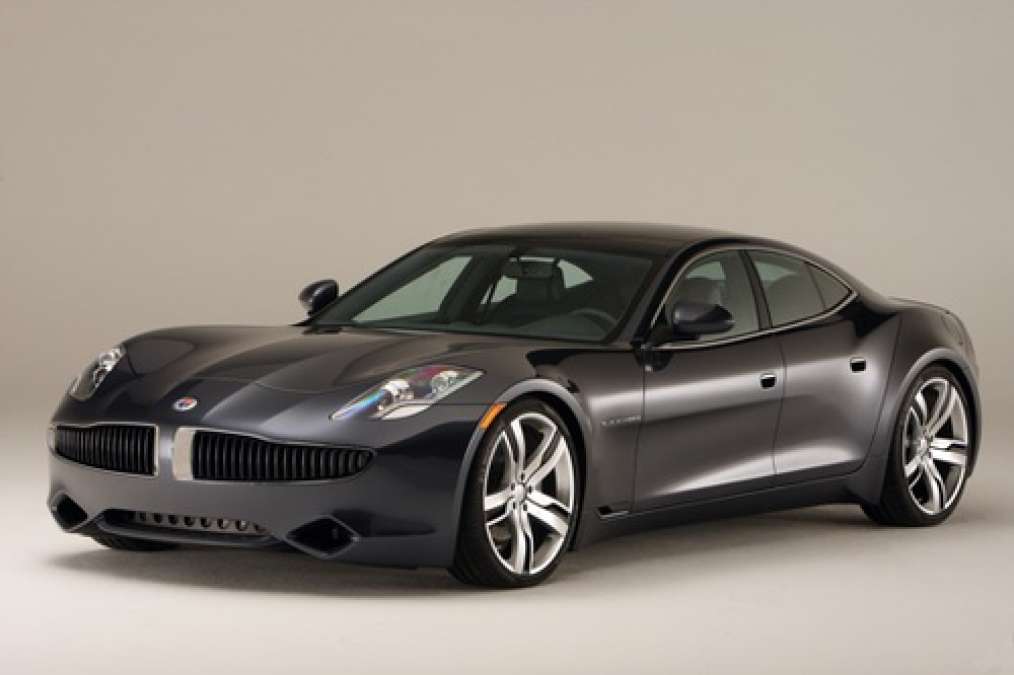In August, the Obama Administration took the long-awaited step of raising the Corporate Average Fuel Economy (CAFE) standard for cars and light-duty trucks to the equivalent of 54.5 miles/gallon by the model year 2025. There has been, in some quarters, doubts raised over this increase in average fuel economy of the vehicle fleet, claiming it would be incredibly hard for the automakers to meet the new CAFE standard. However, Fisker Automotive announced today that the Fisker Karma already meets the target fuel efficiency for 2025.
Last week, at the Autobeat Insider Conference in Dearborn, Michigan, former vice-chairman of General Motors Bob Lutz said about the CAFE standard that "You can't get there from here with a conventional drivetrain." In his opinion gasoline or diesel engines, while the automakers are increasing the efficiency, will simply be unable to implement a 54.5 miles/gallon average fuel economy over the vehicle fleet. Instead, it will be electrification that enables this high a fuel efficiency.
The Fisker Karma is an example of the effect of electrification on fuel efficiency. An interesting little wrinkle is that the NHTSA accounts for fuel efficiency differently than does the EPA, and the CAFE standard is based on the NHTSA rating. Also the exact target varies based on vehicle size/weight. The company says that for a vehicle of the Karma’s size, the fuel economy target for 2025 is 45.6 MPG. By the NHTSA methodology, today, the Karma gets 47.3 MPG. The EPA ratings are, however, for the Fisker Karma are 54 MPG combined on electricity only and 20 MPG combined in hybrid mode on gasoline.
“It’s a testament to the disruptive power of technology that a premium luxury sedan like the 2012 Fisker Karma beats its fuel economy target for 2025 – today,” said Fisker CEO Tony Posawatz. “We applaud NHTSA and the Environmental Protection Agency for their efforts to increase fuel economy and reduce greenhouse gas emissions. With the Karma, we have brought to market the technology that these regulations are designed to encourage, and we’re pointing the way for the rest of the industry.”
In a recent conference call with Fisker Karma owners, the average fuel economy of a group of over 30 respondents averaged 150 MPG. One owner reported consuming only 20 gallons of gasoline over the last 3,500 miles, for an average of 175 MPG, while others reported over 200 MPG. However we should note that this does not account for the electricity usage alongside the gasoline usage. There is an EPA equivalency between gasoline and electricity, and every 38 kilowatt-hours of electricity used should be counted as a gallon of gasoline consumed.
“The Karma is way ahead of the curve, and we are pleased that these fuel economy standards demonstrate that,” said Henrik Fisker, Executive Chairman. “Regulations must make assumptions about how a car is driven on average, but the appeal of the Karma is that the driver can decide when to drive on electricity and when to drive on gas. The car’s performance in the real world is what matters most – and customer feedback so far suggests Karma owners are outperforming the assumptions behind the regulations.”






Comments
1.2 billion in capital.
Permalink
1.2 billion in capital. 1,000 vehicles delivered. $125K per vehicle. I love the cars, but the business model and the progress so far is questionable.
Hmm.. for a startup automaker
Permalink
In reply to 1.2 billion in capital. by John Goreham
Hmm.. for a startup automaker in its first year or so of of delivering cars to deliver 1000+ cars sounds pretty impressive. It's rather expensive to start an automobile manufacturer from scratch. The last was, I have been told, Chrysler 60 years ago. Some examples of prior failed automobile starts were Tucker Automotive and DeLorean.
It's hard to get numbers out
Permalink
In reply to 1.2 billion in capital. by John Goreham
It's hard to get numbers out of Fisker corporate but I believe more than 1600 vehicles have been delivered. Mine is serial number 26xx (I can never remember the last two digits off-hand).
1) There is no 20205
Permalink
1) There is no 20205 "standard" just a 2025 "suggestion." The only standard set is for 2021 and it's not even close to 54mpg.
2) If it was a standard, the 54.5mpg is NOT the CAFE requirement, but the EPA's CO2 emissions requirement IF manufacturers met it purely with engine efficiency improvements. At best, it's a projection. In reality, it's just a nice number to make headlines out of.
3) Diesel engines are already getting better than 50mpg by NHTSA testing.